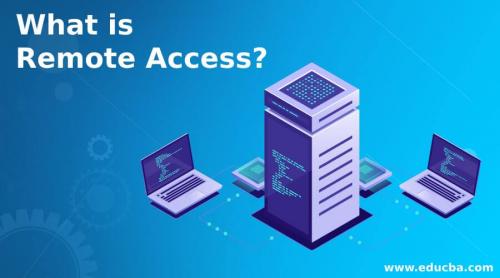How to Optimize Your Remote Desktop Connection Speed

Introduction
Ever experienced sluggishness while using a remote desktop connection? A slow remote desktop connection can be a productivity killer, and it's a common issue faced by many. But don't fret! This article is here to help. We will guide you through various steps to optimize your remote desktop connection high speed RDP.
Understanding Remote Desktop Connection
What is a Remote Desktop Connection?
A remote desktop connection allows you to access another computer through the internet, as if you were sitting right in front of it. It's a fantastic tool for remote workers, IT support teams, and anyone who needs to access files and software on another machine.
Why Optimize Your Remote Desktop Connection Speed?
A speedy connection ensures efficient remote work, quick file transfers, and seamless interactions with remote software. It's essential for maintaining productivity and reducing frustration.
Factors Affecting Remote Desktop Connection Speed
The speed of your remote desktop connection depends on several factors: your internet connection, your hardware, the remote machine's configuration, and more. Understanding these factors can help in troubleshooting and enhancing your connection speed.
Steps to Optimize Your Remote Desktop Connection Speed
Check Your Internet Connection
Your internet speed is the foundation of your remote desktop connection. Make sure you have a stable and high-speed internet connection. Running a speed test can help you know your upload and download speeds.
Optimize Your Hardware
Computer Specifications
The performance of your PC can affect your remote desktop experience. A computer with a powerful CPU, ample RAM, and a robust graphics card can handle remote desktop connections more efficiently. Check Specifications here.
Networking Hardware
Your router or modem also plays a part in your connection speed. Ensure they are up-to-date and can handle high-speed connections.
Use a Wired Connection
If possible, connect your computer to your router or modem using an ethernet cable. Wired connections are typically faster and more stable than wireless ones.
Close Unnecessary Applications
Running multiple applications can slow down your computer and consume your bandwidth. Close any applications that you don't need during your remote desktop session.
Configure Your Remote Desktop Settings
Within your remote desktop software, you can adjust settings for better performance. Lowering the display resolution and disabling features like sound and printer sharing can improve connection speed.
Advanced Optimization Techniques
Use a VPN or a Remote Desktop Gateway
These tools can provide more stable and secure connections, especially when connecting over long distances or unreliable networks.
Consider Using a Remote Desktop Software
There are several third-party remote desktop applications available that offer additional features for optimization, such as compression and caching.
Conclusion
Optimizing your remote desktop connection speed can drastically improve your remote work experience. By following these steps and understanding the factors that affect your connection, you can ensure a smooth and efficient remote desktop session.
Frequently Asked Questions
1. Why is my remote desktop connection slow?
There are several reasons why your remote desktop connection might be slow. It could be due to a slow internet connection, outdated hardware, or improper settings on your remote desktop software.
2. How can I improve the speed of my remote desktop connection?
You can improve the speed by checking your internet connection, optimizing your hardware, using a wired connection, closing unnecessary applications, and configuring your remote desktop settings.
3. Does using a VPN slow down a remote desktop connection?
A VPN can sometimes slow down your connection due to the extra security layers. However, it can provide a more stable and secure connection, which can improve overall performance.
4. Can I use remote desktop software instead of the built-in remote desktop feature?
Yes, several third-party remote desktop applications offer additional features for optimization and may provide a better experience.
5. Does closing unnecessary applications really help in improving remote desktop connection speed?
Yes, closing unnecessary applications can free up system resources and bandwidth, leading to improved performance.
Post Your Ad Here

Comments